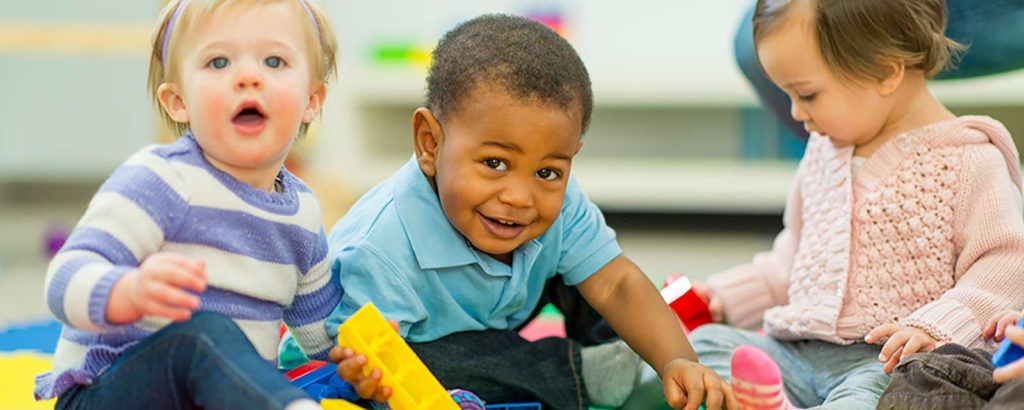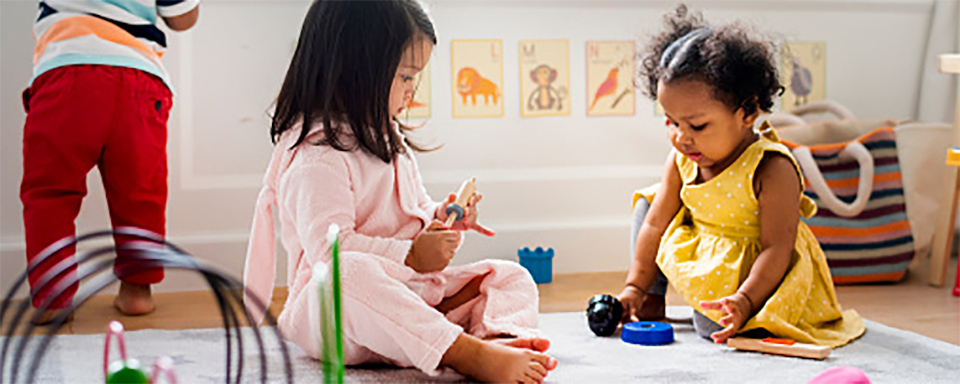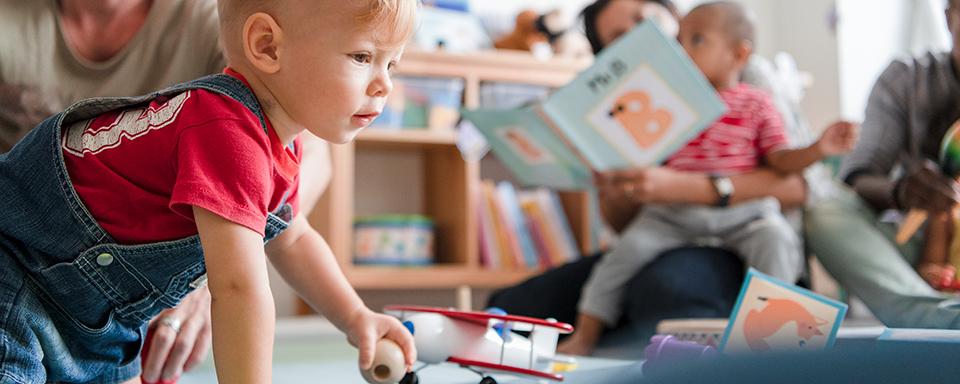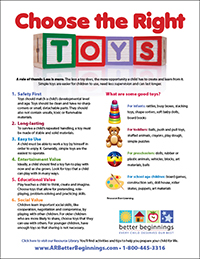A rule of thumb: Less is more. The less a toy does, the more opportunity a child has to create and learn from it. Simple toys are easier for children to use, need less supervision and can last longer.
1. Safety First
Toys should match a child’s developmental level and age. Toys should be clean and have no sharp corners or small, detachable parts. They should also not contain unsafe, toxic or flammable materials.
2. Long-lasting
To survive a child’s repeated handling, a toy must be made of stable and solid materials.
3. Easy to Use
A child must be able to work a toy by himself to enjoy it. Generally, simple toys are the easiest to operate.
4. Entertainment Value
A child should find a toy fun to play with now and as she grows. Look for toys that a child can play with in many ways.
5. Educational Value
Play teaches a child to think, create and imagine. Choose toys that allow for pretending, role-playing, problem-solving and practicing skills.
6. Social Value
Children learn important social skills by playing with other children. By playing socially, they become familiar with cooperation, negotiation and compromise. For older children who are more likely to share, choose toys that they can use with others. For younger children, have enough toys so that sharing is not necessary.
What are some good toys?
For infants: rattles, busy boxes, stacking toys, shape sorters, soft baby dolls, board books
For toddlers: balls, push and pull toys, stuffed animals, crayons, play dough, simple puzzles
For preschoolers: dolls, rubber or plastic animals, vehicles, blocks, art materials, balls
For school age children: board games, construction sets, doll house, roller skates, puppets, art materials
View/Download the PDF version here. (Right click and chose “Save Link As” to download)
Click here to visit our Family Resource Library. You’ll find activities and tips to help you prepare your child for life.








